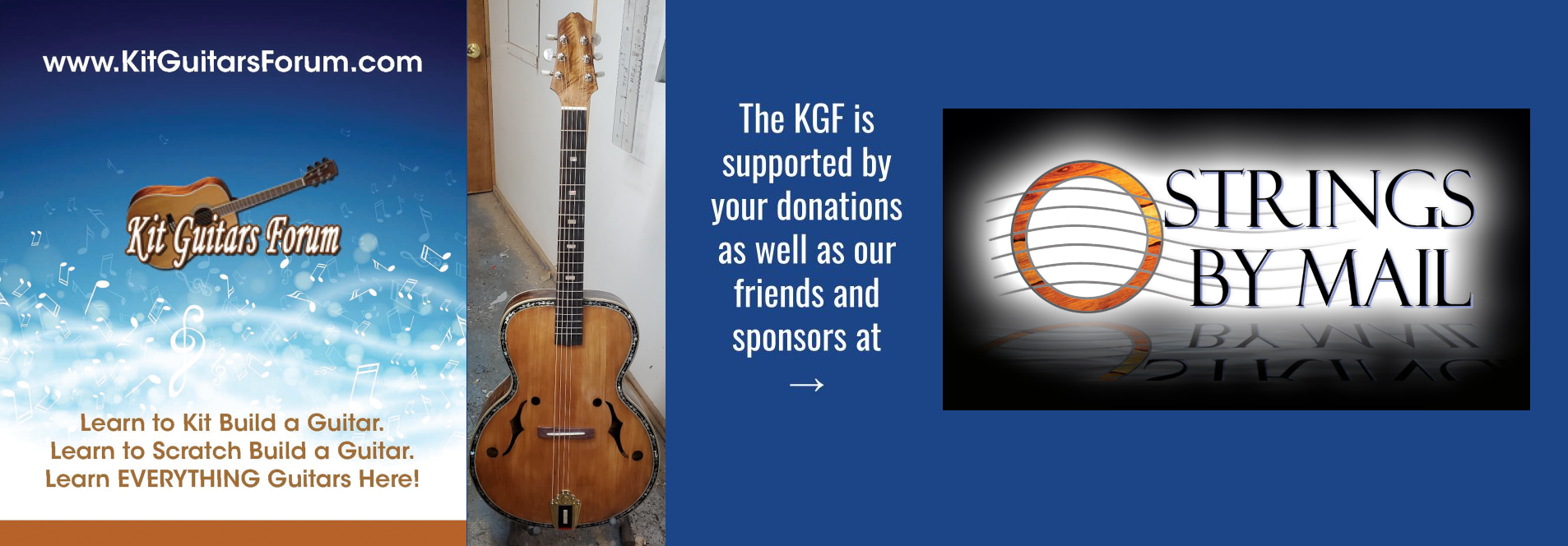Matching Radius of Top Kerfing to Soundboard
-
kencierp
Re: Matching Radius of Top Kerfing to Soundboard
The Pre-contoured braces that Martin sent me in the past ( X and tone/bass bars) were 52' -- that concurred with what Dick Boak had told me a very long time ago. And I believe if you call the factory they will either say the tops are flat or 52' which is true as well -- If I recall Bill Cory validates this in one of his books, the newer "A" frame type where perfectly flat. With all that said I know there are some fine sounding guitars made with top bracing even more extreme than 28', at one time I used 25' as prescribed by David Russell Young. I think you really hit the nail -- its very difficult to single out a construction element that makes one instrument sound better then the next. As an example --- there is lecture after lecture about using straight, even, no angle , no runout material for the sound board --- check out some of the recent MacPherson ads -- in my opinion some pretty odd looking sound boards for multi thousand dollar guitars -- so who's to say?
-
Darryl Young
- Posts: 1668
- Joined: Fri Jul 30, 2010 6:44 pm
- Location: Arkansas
Re: Matching Radius of Top Kerfing to Soundboard
Ken, I would argue that more radius stiffens the plate (and has a more modern or tighter sound) and less radius is looser (and has an older and mellower sound). Not sure if those are good descriptive terms or not. It seems to me that a radiused top sprung onto flat rims would remove some of the radius making it stiffer than if the radius was left along the entire length of the board. I once read a post by Mario that said a radiused top sprung onto a flat rim would open up faster (I think I understood that post.......I would sure hate to misquote him).
There is an old post in the archives at MIMF that may be worth your time finding. This exact topic is discussed. If I recall correctly, Huss & Dalton makes a traditional and modern version of their Dreadnaught and the only difference between the two is the traditional has the top sprung onto flat rims and the modern version has the rims countered in the radius dish. The traditional was warmer and maybe more bass and the modern one sounds tighter and maybe more focused (the best I remember the description.......I haven't compared them side by side). Anyhow, after reading that post and discussing it, I decided to keep the rims on my OM flat for the top. On the back, I radiused it at 16ft like the rest of the back. Not sure what I will do on my first Dreadnaught build as it already has a lot of bass. At least one builder on OLF leaves the rims flat on OM models and sands the radius into the rims on Dreadnaughts to add a little sparkle to them (tighter top).
Some guitars just turn out better than others. I'm guessing it has to do with getting the to thickness right, the bracing right, good joinery, the right cross stiffness for the body size, the right weight bridge and bridge plate, etc.
There is an old post in the archives at MIMF that may be worth your time finding. This exact topic is discussed. If I recall correctly, Huss & Dalton makes a traditional and modern version of their Dreadnaught and the only difference between the two is the traditional has the top sprung onto flat rims and the modern version has the rims countered in the radius dish. The traditional was warmer and maybe more bass and the modern one sounds tighter and maybe more focused (the best I remember the description.......I haven't compared them side by side). Anyhow, after reading that post and discussing it, I decided to keep the rims on my OM flat for the top. On the back, I radiused it at 16ft like the rest of the back. Not sure what I will do on my first Dreadnaught build as it already has a lot of bass. At least one builder on OLF leaves the rims flat on OM models and sands the radius into the rims on Dreadnaughts to add a little sparkle to them (tighter top).
Some guitars just turn out better than others. I'm guessing it has to do with getting the to thickness right, the bracing right, good joinery, the right cross stiffness for the body size, the right weight bridge and bridge plate, etc.
Slacker......
-
Darryl Young
- Posts: 1668
- Joined: Fri Jul 30, 2010 6:44 pm
- Location: Arkansas
Re: Matching Radius of Top Kerfing to Soundboard
Ken, I found the discussion on MIMF......here is a link (you have to be signed in to view the archive):
http://www.mimf.com/library/domed_tops.htm
And here is where I asked a similar question on OLF:
http://www.luthiersforum.com/forum/view ... 01&t=26018
Some great info from experienced builders at the MIMF link.
http://www.mimf.com/library/domed_tops.htm
And here is where I asked a similar question on OLF:
http://www.luthiersforum.com/forum/view ... 01&t=26018
Some great info from experienced builders at the MIMF link.
Slacker......

